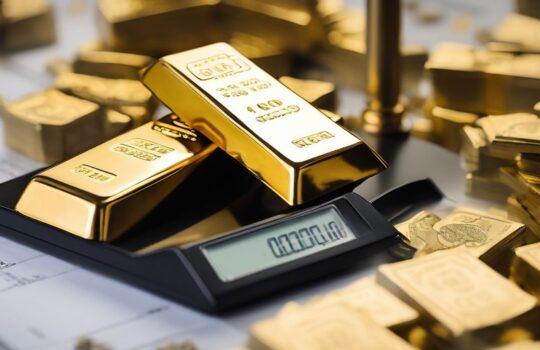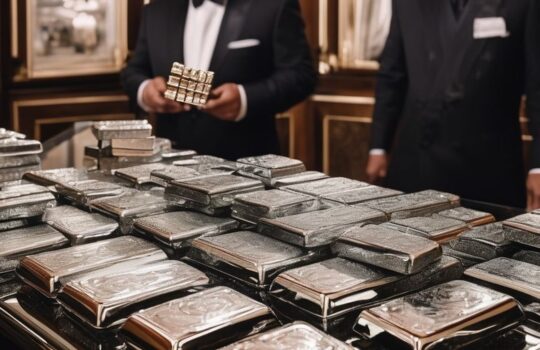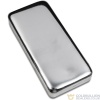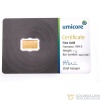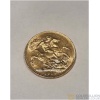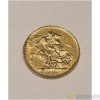Liquidating Your Assets: How to Sell Silver Bars in the UK Market

Liquidating your silver bars in the UK market involves understanding the intricacies of the UK Bullion Market, navigating costs and fees, and assessing market value and liquidity. This process requires careful consideration and planning to ensure a successful sale. In this article, we will explore the key aspects of selling silver bars in the UK market and provide valuable insights for a smooth liquidation process.
Key Takeaways
- BullionVault’s Storage Agreement(s) with the Vault Operator(s) is crucial for understanding the security and logistics of storing silver bars in the UK market.
- Determining Fair Market Value is essential to ensure a profitable sale of silver bars in the UK market.
- Selling Strategies for Silver Bars should be tailored to the current market conditions and demand.
- Cost of Physical Withdrawal and Closing BullionVault Account are important considerations when liquidating silver bars in the UK market.
- Local Good Delivery Units for Precious Metals play a key role in facilitating the sale of silver bars in the UK market.
Understanding the UK Bullion Market
BullionVault’s Storage Agreement(s) with the Vault Operator(s)
When you choose to store your silver bars with BullionVault, you are entering into a Storage Agreement with the Vault Operator(s) that ensures your assets are allocated and remain your property. BullionVault acts as your agent, managing the relationship with the Vault Operator and confirming the bailment nature of your bullion’s safekeeping.
The Vault Operator is responsible for the full custody and control of your silver bars, from the moment they are consigned to the vault, through transportation and storage, until they are released according to BullionVault’s instructions. This process is designed to provide the strongest legal protection for your assets within a professional bullion vault.
Your silver bars are stored under a bailment arrangement, which means they are specifically identified and physically segregated at all times, ensuring their integrity and your peace of mind.
It’s important to note that BullionVault may engage multiple Vault Operators within the same jurisdiction to hold pooled client holdings of a particular metal. By storing your silver with BullionVault, you accept the practises of the local professional bullion market and the Vault Operators listed on their website.
Selling Silver Bars in the UK Market
When liquidating silver bars in the UK, understanding the nuances of the local market is crucial. Selling silver bars requires knowledge of the local good delivery standards, which typically involve 1,000 troy oz bars. These bars are often traded on sealed pallets, usually comprising 32 bars each, ensuring they meet the good delivery criteria.
To sell silver bars effectively, consider the following steps:
- Determine the fair market value based on current spot prices.
- Ensure your silver bars meet the local good delivery standards.
- Choose a reputable dealer or trading platform with a regular dealing relationship with BullionVault.
- Be aware of potential taxes and the loss of anonymity in monitored transactions.
It’s important to remember that while the UK market offers opportunities for selling silver bars, additional charges may apply for transferring bars to an acceptable form or location.
Finally, when selling large quantities, such as one tonne or more of silver, you have the right to trade directly on the local professional spot bullion market. However, this is typically facilitated through bullion dealers associated with BullionVault.
Local Good Delivery Units for Precious Metals
When considering the liquidation of silver bars in the UK, it’s essential to understand the specifications for local good delivery units. The standard unit for silver is a 1,000 troy oz bar, typically processed on sealed pallets of 32 bars, equating to roughly one tonne. This standardisation ensures that the bars meet the requirements for professional trading and are readily accepted in the market.
For those looking to trade large quantities, such as one tonne of silver or more, the opportunity to engage directly with the local professional spot bullion market arises. However, this is typically facilitated through bullion dealers with whom BullionVault maintains regular dealing relationships.
The website page features various silver bars for sale, including Metalor, Umicore, GBD Best Value, and plain silver bars. It also includes a blog and contact information.
Understanding these units and the associated rights to trade can significantly impact the ease of transaction and potential returns when selling silver bars.
Costs and Fees
Cost of Physical Withdrawal
When deciding to liquidate your silver bars, it’s crucial to consider the cost of physical withdrawal. This fee is charged for the removal of physical silver from a vault or storage facility. The cost can vary depending on several factors, including the size of the withdrawal and the policies of the storage provider.
Withdrawal fees are typically structured as follows:
- A fixed fee for the withdrawal service
- Additional charges based on the weight or value of the silver
- Possible transportation and insurance costs
It’s important to request a detailed breakdown of all potential fees to avoid any unexpected expenses. Here’s an example of how fees might be structured:
| Service | Fee |
|---|---|
| Fixed Withdrawal Fee | £30 |
| Weight-based Charge (per kg) | £2 |
| Insurance (optional) | Variable |
Remember, the goal is to maximise your return on investment, so factor in these costs when calculating the net proceeds from the sale of your silver bars.
Closing BullionVault Account
When the time comes to close your BullionVault account, it’s important to be aware of the process and implications. BullionVault will sell any remaining bullion in your account and, subject to account validation and legal permissibility, return the cash balance to your linked bank account via bank transfer.
To ensure a smooth closure, follow these steps:
- Notify BullionVault of your intent to close the account.
- Confirm that all personal information is up-to-date.
- Accept the banking details provided for the return of funds.
- Await the sale of any bullion and the transfer of funds.
Please note that BullionVault retains information about you for a period post-account closure, as per their updated Terms and Conditions.
Closing your account also means that you will no longer have access to the various services provided, such as tracking spot prices, modifying account settings, or viewing the vault bar lists. It’s crucial to consider the timing of your account closure to avoid any inconvenience.
Trading Rights for Precious Metals
After considering the costs and fees associated with trading precious metals, investors must turn their attention to the market value and liquidity of their assets. Understanding the market value of silver bars is crucial for making informed decisions when liquidating assets. The liquidity of silver, like that of gold, is influenced by various factors including market demand, the size of the bars, and the reputation of the mint.
Market liquidity is a key aspect to consider, as it determines the ease with which silver bars can be sold without significantly affecting the price. Here’s a simple list to help you assess the liquidity of your silver bars:
- Check the current spot price of silver.
- Compare prices from different dealers.
- Evaluate the buy-back policies of the dealers.
- Consider the size of your silver bars; smaller bars tend to be more liquid.
When planning to sell silver bars, it’s important to have a strategy in place. This might involve timing the market to maximise returns or finding the right buyer who values the purity and weight of your bars.
Selling strategies for silver bars should be tailored to the individual’s financial goals and the market conditions. Whether you’re looking to sell quickly or maximise your investment, understanding these factors is essential for a successful transaction.
Market Value and Liquidity
Determining Fair Market Value
When liquidating silver bars in the UK, determining the fair market value is crucial. This value is the price at which the silver can be sold in an open and competitive market where both parties have reasonable knowledge of the relevant facts. To ascertain this, one must consider the spot price, which is the current price for immediate delivery of silver.
Spot prices fluctuate based on market conditions, so it’s essential to monitor them closely. Here’s a simple guide to help you understand the factors that influence the fair market value of silver bars:
- Market Demand: The level of demand for silver in the market.
- Rarity and Desirability: Certain bars may carry a premium due to their rarity or brand.
- Condition: The physical condition of the silver bar.
- Weight and Purity: Standard measurements that affect value.
Remember, the fair market value is not static; it’s shaped by market forces and can vary from one seller to another. It’s advisable to get multiple quotes to ensure you are getting the best possible price for your silver bars.
One should also be aware of the differences in liquidity between various types of silver products. For instance, a market exists for some coins, but an obscure Venezuelan ingot will be far less liquid than a Gold Britannia. It’s also worth noting that while many online gold dealers may offer competitive prices, establishments like the Gold Bullion Company in Birmingham’s Jewellery Quarter are known for their trustworthiness and may provide better value for your precious metals.
Liquidity of Gold and Silver
The liquidity of precious metals like gold and silver is a critical factor for investors to consider. Silver bars, in particular, are highly liquid assets in the UK market, making them a preferred choice for those looking to maintain a level of flexibility in their investment portfolio. Unlike other assets that may take time to sell, silver can often be converted into cash swiftly.
Silver’s liquidity is influenced by various factors, including market demand, the size of the bar, and the purity of the metal. Here’s a brief overview of how these factors can affect liquidity:
- Market Demand: The higher the demand, the easier it is to sell silver bars.
- Bar Size: Smaller bars tend to be more liquid as they are affordable to a wider range of investors.
- Purity: Bars with a recognised hallmark or certification are easier to sell.
It’s important for sellers to be aware that liquidity can fluctuate based on economic conditions and market sentiment. During times of market stress, liquidity can tighten, potentially affecting the ease of selling silver bars.
When considering the sale of silver bars, it’s advisable to keep an eye on the current market trends and to choose the right moment to sell, ensuring the best possible return on investment.
Selling Strategies for Silver Bars
When liquidating silver bars, it’s crucial to have a strategy that maximises returns while minimising risks. Understanding the market dynamics and the right timing can significantly affect the profitability of your sale. Here are some strategies to consider:
- Assess the market demand: Keep an eye on the spot prices and market trends. If demand is high, you might get a better price for your silver bars.
- Choose the right platform: Whether you opt for online marketplaces, auctions, or local dealers, each has its pros and cons.
- Consider bulk sales: Selling larger quantities can sometimes secure a better price per unit due to reduced transaction costs.
It’s essential to be aware of the liquidity of silver bars. While they are generally a liquid asset, market conditions can vary, and having a flexible approach can be beneficial.
Remember, each method of selling will incur different fees and require different levels of involvement. It’s advisable to compare these before making a decision. For instance, selling through an online broker might offer convenience but at the cost of higher fees. Conversely, a private sale might offer more control over pricing but requires more effort in terms of marketing and negotiation.
Conclusion
In conclusion, selling silver bars in the UK market involves careful consideration of various factors such as market liquidity, transportation costs, and tax implications. It is important to be aware of the potential charges and fees associated with selling and transferring bullion, as well as the impact on anonymity and tax liabilities. Additionally, understanding the local good delivery units for silver, platinum, and palladium is crucial for making informed decisions. Overall, navigating the process of selling silver bars in the UK market requires thorough knowledge of market practises and regulations to ensure a successful and profitable transaction.
Frequently Asked Questions
What are the costs of physical withdrawal?
The cost of physical withdrawal depends on the quantity of bullion being withdrawn. For whole bars, the fee is approximately 2.5%, while for smaller quantities, it is around 7.5%. The minimum release is 50 grammes, and having 100 grammes of gold sent home in Europe costs about 165€.
How can I close my BullionVault account?
Closing the BullionVault account is free. There are no costs associated with closing the account.
How is fair market value determined for silver bars?
The fair market value of silver bars is determined based on the spot silver price on the day of sale. Online gold dealers typically pay around 4% under the fair market value, while pawnbrokers pay out around 15% under fair market value.
What are the local good delivery units for precious metals?
The local good delivery units for precious metals vary. For gold, it is usually a 400 troy oz bar. For silver, it is usually a 1,000 troy oz bar, processed on sealed pallets of usually 32 bars, being approximately one tonne. For platinum and palladium, the bars range between 32.151-192.904 troy oz (1-6 kilogrammes).
What are the selling strategies for silver bars?
Selling strategies for silver bars depend on the type and quantity of silver bars being sold. It is important to consider the liquidity of the bars and the best places to sell them. Additionally, having a buy back guarantee from the outlet of purchase adds certainty and value to the sale.
What are the trading rights for precious metals?
When you have a right to trade gold, silver, platinum, and palladium directly on the local professional spot bullion market, you can do so only via bullion dealers with whom BullionVault has a regular dealing relationship. The local good delivery units for each metal are specified, and normal commission or mark-up rates apply.

